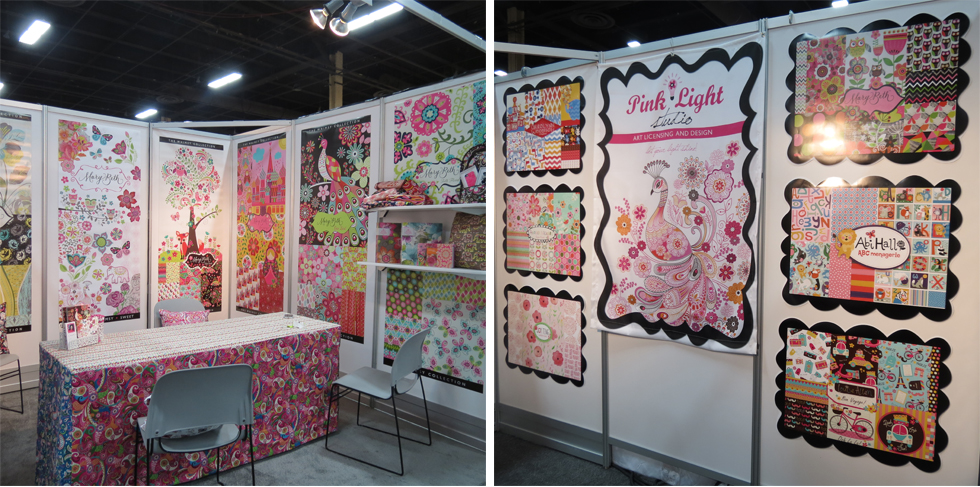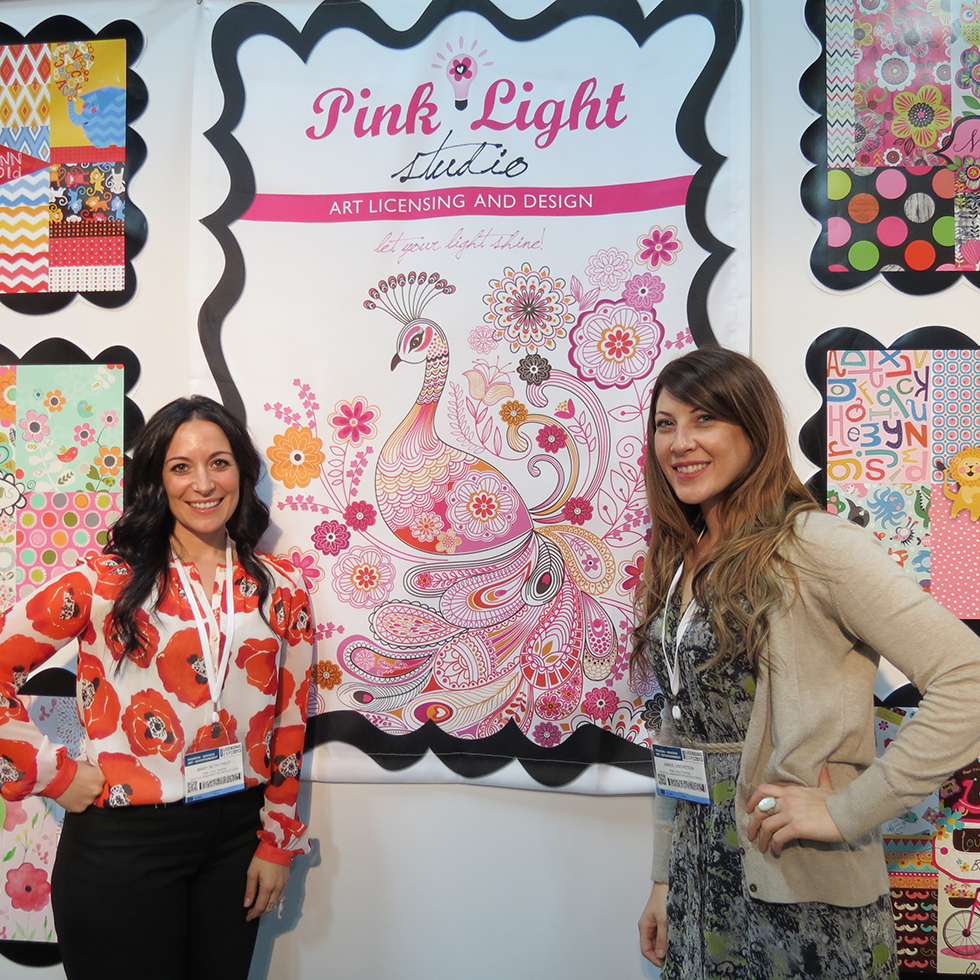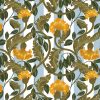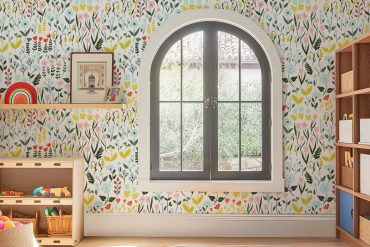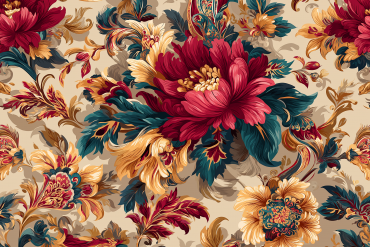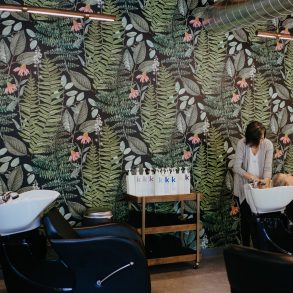All images from Pink Light Studio’s booth at The Licensing Expo in Las Vegas, 2013
Pink Light Studio was established in Seattle, Washington in 2009 by owner, agent, and creative director, Mary Beth Freet (pictured above, left.) Mary Beth will be joining us in our upcoming Sharing Your Work workshop, as one of the agents/buyers to whom you will be presenting your pattern collections, and will provide feedback and advice based on your work. If you are ready to leap into success, you can apply for the workshop here, and read on to learn more about Mary Beth and her amazing business, Pink Light Studio!
Tell us a bit about your design background and career path. What made you decide to start your own studio?
I graduated from the University of Washington with a BFA in Visual Communications. I was fortunate enough to be hired with Nordstrom Product Group and started working as a Textile Designer, creating artwork for their kids wear clothing line. I also worked for a major textile design studio in New York. This studio sold my artwork outright to the fashion industry. After doing both of those jobs for many years, I decided that I wanted a new challenge. A friend told me about SURTEX and we took a trip to walk the show. As soon as I saw all the amazing licensing agents and gorgeous artwork, I decided that I wanted to license my work. It was about another 6 months of working up courage before I finally decided to start Pink Light Design. Once I decided, everything fell into place and I prepared for my first show, deciding that I would use the knowledge I had acquired and trust that I would learn everything else along the way. At this point, I didn’t really know much about art licensing but I was very knowledgeable about product development, merchandising and design. It was a really difficult decision for me to make, as I was a single mom with two young boys, leaving my GREAT JOB! It was a leap of faith but I truly believed that I could do it!
What is a typical day like for you on the job? How much time do you spend designing vs. juggling other aspects of your business?
There really is not a “typical” day in the licensing world as it’s really all about being able to be flexible to meet your client’s needs. I spend a lot of time prioritizing since we are always very busy. My time is spent keeping up on emails, reaching out to new clients, following up with current clients, communicating with artists, setting up licensing agreements and freelance contracts, database management, designing, project management, etc. I spend between 20% to 50% of my time designing, depending on the month, season, projects, etc. Part of what I love about having my own business is that every day is different and the projects are always new and fun. I never get tired of designing and taking on new challenges.
Could you talk a bit about licensing and why you chose to go that route as opposed to selling patterns outright?
Pink Light Studio actually does both licensing and sells patterns outright. In addition, we also offer custom design and freelance. In the past few years, we have organically moved more into the licensing and custom design area. We still offer outright sales to some of our clients but really prefer licensing and custom design projects. I think that there are pros and cons to both ways of working. When you sell your art outright, there is an immediate transaction, both of satisfaction and income for the artist. Licensing is a much longer process that requires a bit of patience but it is a great option because the artist maintains the copyright over their artwork. They can license the same artwork to other clients and on other products. The artist can also get their name out there, by adding their copyright information and logo to the product (depending on how the client works). Also, it is very rewarding to see your licensed product as samples and in-store, which, in my experience, you do not always get to, see when you sell your artwork outright.
Since you have been on both sides of the designer/studio relationship, could you talk a bit about your experiences with each? When designing for print studios, did you feel you had a lot of creative freedom or were you expected to adhere to a certain style or certain trends? As an agent, what are some of the challenges of managing multiple artists and design styles?
In my experience designing for a print studio, they gave me direction, but then I sent the artwork that I was inspired to create and changes were never requested. In this way, working for a print studio was very fulfilling in terms of creative freedom.
As an agent for a licensing studio, I want my designers to feel this creative freedom. At the same time, the biggest challenge is making sure that my designers are creating collections that will work on many different products. Oftentimes, my artists will send in really great collections, but I cannot always see them as working on multiple products. If I cannot see the artwork being able to work on at least 3 different product categories, then I often go back to the artist and ask them to rework the collection. I prefer not to do this regularly, but at the same time, I want my artists to be successful. Helping them develop artwork that will work for art licensing is key. In order to be successful in art licensing, your artwork must translate well onto MULTIPLE products.
As far as managing multiple artists and design styles, the biggest challenge is what I mentioned above. Some really great artists don’t understand how to create repeats or even how to make their artwork look like it’s in repeat. That is probably the most challenging. Then, there are some amazing pattern designers that cannot understand how to design artwork that would work well for a greeting card. Therefore, I work really diligently to teach my artists how to develop collections that can work on multiple products.
What do you look for in the artists you represent? Do you have any suggestions for those currently seeking an agent and trying to stand out from the crowd?
When I first started Pink Light, I took a broad approach to how I looked for artists. I really was looking for designers that fit within the fun, happy style of Pink Light. Over the past few years, I have been looking for artists that were skilled with character design and illustration, not just patterns. Recently, I brought on a new designer that is much more of a fashion illustrator. As you can see, as our business grows, I have been adapting and changing what I look for in artists. This changes as trends change and as I see more business potential, based on what I hear requested from clients or what I see is missing in the market.
If you want to stand out from the crowd, then it’s really important to develop a unique style. Don’t get disappointed if you don’t find an agent right away. Maybe that means that you should give it a try on your own, or your unique style is still being developed and needs to be finessed, or maybe you just have not yet found the right agent. Another important piece of advice is to really have a broad range of designs and collections before trying to seek representation. I have heard that some agents don’t take on designers unless they have 100 pieces of artwork in their portfolio. It’s really important to have a wide range of work so that the agent can really understand what they can expect from you, what your strengths and weaknesses are, and what inspires you. All of this is much more evident when you can see more work from a designer.
What are your goals for the future of Pink Light Studio? What would you like to be working on a year from now or five years from now?
I love this question. I have a few big goals that I would like to accomplish this year. First, I would like to bring on an in-house graphic designer. I would like to spend more energy on reaching out to some dream clients that we have not yet met, spend more energy on presentations and really getting our artists’ names out in the market and more recognizable. Bringing on an in house designer will really help me reach this goal. Additionally, we will be exhibiting at The Licensing Expo this year in a new section which I think will bring us many new opportunities. I want to continue focusing on building our licensing efforts both in the US and internationally. I also want to exhibit at an international tradeshow, perhaps Spring Fair or Brand Licensing in the UK. I would also like to focus on social media and press for Pink Light and our artists. This always seems to be the last thing on my to do list and it would be really fun to see our artists highlighted on blogs and in magazines.
Do you have any words of advice for aspiring designers trying to make their way in the textile industry?
My advice would be to really focus on the style that is unique to you. That really comes first. Having a unique point of view and design style will make you stand out from the crowd. Also, you have to really believe in yourself. Set your goals and see yourself living the dream you see for yourself, and don’t worry about the “how”. Sometimes we can get so focused on “how” we are going to “make something happen”, that it gets in the way of our dreams. Set your intention and then take small steps every day in the direction of your dream and soon enough, you will be living it!
Sharing Your Work begins on May 26th, 2015. In this four week course we walk you step by step through the process of developing professional marketing tools which will allow you to confidently grow your business. The workshop culminates with the opportunity to have your artwork reviewed by three buyers from companies such as Pink Light Studios, Hunt+Gather, Pendleton, Keeco, Creative Capital Design, Modern Yardage and more. In addition to your review, these buyers may become vital industry contacts. Spots are limited so don’t wait to apply!

